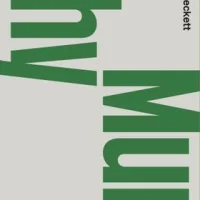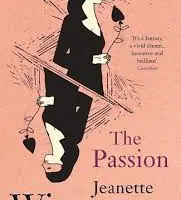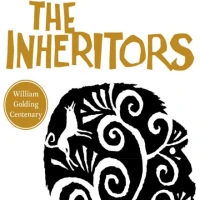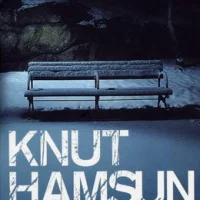The End of Everything, by Megan Abbott
I last read Megan Abbott back in 2008. Die a Little was a solid slice of 50’s-style noir and an exploration of the darkness lurking under the suburban dream.
It wasn’t original, when isn’t there darkness lurking under the suburban dream? Originality though is overrated. Die a Little was good, and that’s much more important.
The End of Everything is set during an indeterminate 1980s summer. We’re back in the suburbs, and 13 year old Lizzie is about to find her world turned inside out when her best friend Evie goes missing. What follows is a claustrophobic heat-haze of adolescent anxiety and desire as Lizzie inserts herself ever-more into Evie’s home and into the police investigation into her disappearance.
Like most adolescents Lizzie doesn’t get on that well with her (single-parent) mother. She’d rather live next door, she’d rather be Evie’s sister and live with Evie’s glamorous older sister Dusty, and with Evie’s father, Mr Verver, who is fun and cool and who Lizzie has a bit of a crush on.
Mr Verver isn’t like the other adults, he’s not boring. He’s mischievous, full of laughter, he plays boardgames with the kids and cheats openly and outrageously, he teases Dusty about her boyfriends and their shy hopes to get further with her than she’ll let them. He’s the nicest man Lizzie knows. She’d give anything to be in Evie’s place, to live with Dusty and Mr Verver.
All I could think was how wondrous it was—oh, the two of them. Everyone wanted to fall under their enchantment, her gaze hard and appraising, his so soft, so welcoming.
That was how it was in that house, and there was so much fun to be had. Wouldn’t it be wonderful, I remember thinking—was it just five days ago?—to talk about boys with Mr. Verver? To play Uno with Evie for hours and watch Dusty try on her pastel dresses and listen to music with Mr. Verver until dawn?
With Evie gone though the laughter’s gone too. Mrs Verver is upstairs sedated, rarely seen. Mr Verver spends his days desperately hoping for some word from the police, some clue to what happened. There’s an Evie shaped hole in his house, a hole Lizzie could perhaps fit into. Evie and Lizzie were so close after all that they were almost the same person, or at least looked they were.
We shared everything, our tennis socks and stub erasers, our hair elastics and winter tights. We were that close. Sometimes we blinked in time.
Back in second, third grade, all the parents always saying, Do the dance, do the dance. The first time was at the tap recital. “Me and My Shadow,” in our matching silver leotards and shiny top hats, our hair the same muddy color, the baby curls sprayed to shellac by Madame Connie, our teacher. Then everyone made us do it again and again, at birthday parties, on Easter. A hundred times in the Verver basement, my living room, at school, step-shuffle-back-step, step-shuffle-back-step. Over and over, cheeks painted red. Until I grew two inches and Evie’s hair went dark and finally we never did that dance again.
But I bet I still could do it. I bet I could do it right now. These things, though, they end.
At 13 you’re still a child, but perhaps no longer entirely so. Lizzie and Evie used to have no secrets, but adolescence changes you, it gives you things to be secret about. It lets you see things you used not to, and gives you new things to want.
“He was rubbing on you like it was Boy Scout camp,” Evie said later. “Like if he rubbed hard enough he could start that fire, get that merit badge.”
Arguably that’s not actually an apposite quote for this bit of the blog, but I found it too funny not to include.
Lizzie remembers a car following her and Evie the last time they were together, and when she tells the police it’s the first real clue they’ve had. Lizzie’s briefly at the investigation’s heart, and soon after she’s searching her memory for any other clues she might have forgotten that she can throw out and in doing so make herself all the more important, all the more the thin chain of hope linking Mr Verver to the possibility of Evie being found. She’s at Mr Verver’s all the time now, comforting him, chasing memories, so often present that Dusty starts to resent her.
As so often, what’s interesting here isn’t the crime, what happened to Evie and whether she’s alive or not. What’s interesting is Lizzie – her desire to take Evie’s place, her own investigation of Evie’s absence which owes more to her need to come up with new clues that she can take to Mr Verver and the police than it does to a desire to find Evie.
Lizzie then is a young Nancy Drew, but though her point of view narration is full of talk of love, purity and the desire to help her motives aren’t justice or truth. Sex is never described directly in this novel, but it runs through it, seeps through the pages. It’s a book suffused with sex, but inchoate and indirect. Of course it is. Lizzie is only 13 and this is still just the 1980s. She doesn’t know enough to describe it any better.
Child narrative voices are notoriously difficult to get right. Lizzie’s worked for me, her frustration with the adult world and her simultaneous pull back to the certainties of childhood and forward to boys and freedom and biology, but I have seen other reviewers query if at times she’s perhaps too adult and knowing.
“Why was Mrs. Verver throwing up?” I’d asked my mother, who’d sighed and said, gravely, “I don’t think you understand what’s happening.”
And that’s when I stopped listening, shut my ears from the gloom and murk of her. It’s almost like she savors the terribleness—everyone does. Like it does things for them, makes everything seem more exciting, more momentous, more real.
Then again, I found Adrian Mole utterly unpersuasive when I read him around age 14. Perhaps it’s a question of our own experience, I was more a Lizzie than an Adrian which may be why one rings true for me and the other not (or perhaps Adrian Mole is an adolescent boy as depicted by someone who never was one, whereas Megan Abbott was once an adolescent girl).
The prose here is often beautiful in a slightly breathless endless-summer way (quite different in style to Die a Little, Abbott is good at reflecting character through description). I remember the book through a golden haze, not precisely, but impressionistically (in fact, I had to remind myself of some of the details in order to write this).
In the end though prose alone can’t carry a crime novel. Character is key. End stands or falls with the depiction of Lizzie, whether you believe in her. Abbott is the author of the unusual viewpoint character, crime seen not by a hardboiled detective but by a housewife or a teenage girl. That’s what makes Abbott an interesting read.
Looking back, I’m surprised it took me so long to return to Abbott. She’s not a literary writer, but she’s not trying to be. She’s an extremely good crime writer and a refreshing one. If I had to make a comparison it would be to Joe R. Lansdale, not because they write anything like each other (they don’t), but because they write within genre but in new ways. I could live a long time without meeting another maverick detective who has a troubled home life and doesn’t go by the book, but I’ve always got space for a Lizzie.
For those who may be interested and based in the UK The End of Everything is 99p on UK Kindle as at the time of writing.














I read and enjoyed this one Max. This Song is You is still my favourite and it would be hard for Abbott to top that book IMO. She has a new one coming out soon: The Fever, BTW.
Pre-blog Guy? I searched yours for Abbott reviews but there was only one that was part of a compendium of some sort, no stand alone novels.
Forgot to ask, have you read Joe R. Lansdale’s The Bottoms? Possibly the most successful use of a child narrator in a crime novel I’ve seen.
http://mostlyfiction.com/mystery/abbott.htm
No I haven’t read that one, but as you know I’m a Lansdale fan. Funny isn’t it, the way that works–if you like X, you’ll probably like Y.
I like the sound of it. I’m curious about Lizzie. I didn’t know Abbott, so thanks for pointing out a new writer.
PS: I had to research Adrian Mole.
Adrian Mole’s pretty famous in the UK. Children’s fiction beloved by adults, as so much children’s fiction is. I was never a fan, but many others are.
Abbott is interesting because of her protagonists. Guy’s pretty consistently said that The Song is You is her best. I probably preferred To Die For to this one looking back now. I haven’t read The Song is You yet, I’m slightly holding off on it so as not to read her best too early (I trust Guy’s judgement on these matters).
Pingback: Megan Abbott: The End of Everything (2011) | Beauty is a Sleeping Cat